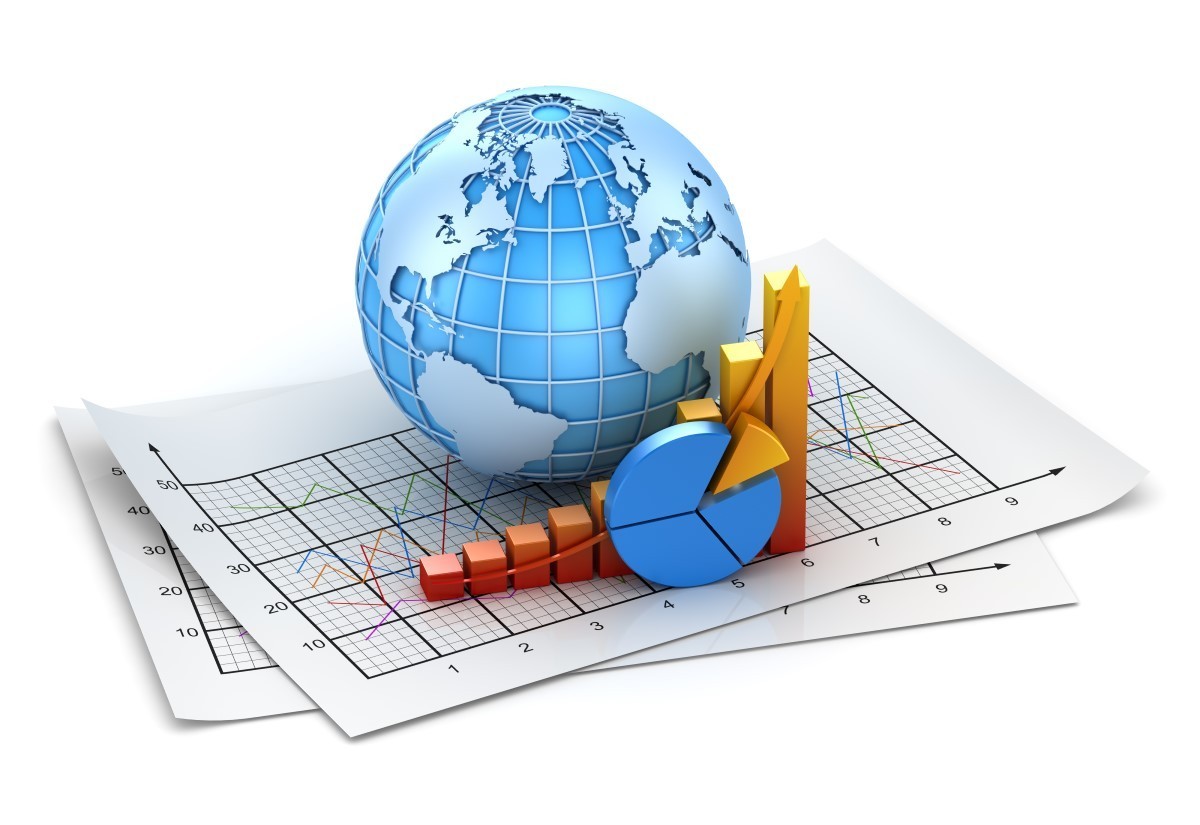In the vast tapestry of economic phenomena, few concepts capture the complexity and nuance of our economic system quite like biflation. This term, coined by Dr. F. Osborne Brown in 2003, offers a window into an economic anomaly that defies conventional wisdom.
The term tells the story of an economy caught between two opposing forces: inflation, where prices soar, and deflation, where they plummet. But unlike the straightforward narrative of general price trends that inflation and deflation suggest, biflation presents a more intricate plot, where different sectors of the economy move in opposite directions.
To learn more about Biflation, let’s dive in!
Into the World of Biflation
Imagine an economy as a bustling marketplace. A huge shopping mall selling everything from essential commodities to luxury goods and real estate. Now, picture a scenario where, due to a strategic decision to inject more currency into this marketplace to spur activity, the prices at the commodity stalls begin to rise. At the same time, the luxury goods and real estate sections witness a drop in prices. This peculiar situation, where you pay more for groceries but less for a new house, encapsulates the essence of biflation.
The Cantillon Effect
Central to the narrative of biflation is a concept known as the Cantillon effect. The phenomenon is named after the 18th-century economist Richard Cantillon. This effect describes how not all parts of the economy equally feel the impact of monetary policy changes. Some sectors might thrive, receiving the influx of new money head-on, leading to price increases. Meanwhile, other sectors, more distant from the monetary injection, see prices fall, creating a disjointed economic storyline.
The Causes Behind the Curtain

The causes of biflation are as multifaceted as their effects. Economic stagnation, characterised by slow growth and high unemployment, sets the stage, affecting demand across the board. Against this backdrop, essential goods maintain their value or become even more expensive due to consistent demand, while non-essential and luxury items face a downturn. Additionally, monetary policies, such as lowering interest rates and increasing the money supply, add complexity to the plot, influencing different sectors in varied ways.
The Great Recession: A Modern Tale
The Great Recession offers a recent chapter in the story of biflation. The federal government’s response, involving trillions in monetary stimulus and historically low-interest rates, aimed to reinvigorate the economy. However, the effects were uneven. While housing markets struggled to recover, commodities like gasoline and gold surged in price. This period vividly illustrates biflation’s ability to create a divided economic experience where recovery and struggle exist.
Beyond Surface: The Depth of Biflation
Biflation is more than an economic term; it’s a story of how different parts of our economy can move in contrasting directions, influenced by many factors, from monetary policy to global market dynamics. Understanding biflation is akin to understanding the complexity of modern economies, where simple narratives give way to intricate realities. As we navigate through these economic waters, the lessons of biflation remind us to look beyond the surface, seeking deeper insights into the forces that shape our financial world.
Biflation: Economic Dichotomy Defined

Biflation, an economic condition in which inflation and deflation coexist, presents a complex landscape for consumers, businesses, and investors alike. It occurs when prices of certain asset classes or commodities rise due to inflationary pressures. At the same time, others fall due to deflationary forces, creating a dichotomy in the economy that defies traditional economic responses.
This phenomenon challenges the conventional wisdom that the economy can only be in a state of inflation or deflation at any given time. Thereby introducing a scenario where both conditions interplay, affecting asset values, purchasing power, and investment strategies.
Understanding biflation requires dissecting its causes, differences from standard inflation or deflation, historical occurrences, and implications for global markets and investment portfolios. As economies become increasingly interconnected through globalisation, the dynamics of biflation offer insightful perspectives on navigating economic cycles. As a result, it emphasises the need for adaptive strategies in monetary policy, investment decision-making, and economic analysis.
The Dual Paths of Biflation Explained
Biflation encapsulates the simultaneous occurrence of inflation and deflation within an economy. Divergent price movements across different sectors or asset classes mark it. This phenomenon deviates from general price trends typically associated with inflation or deflation, where prices rise uniformly or fall across the board. Instead, biflation showcases a scenario where, for instance, the cost of essential commodities may escalate due to increased demand or supply constraints.
At the same time, prices for assets like real estate or consumer goods might decline, reflecting deflationary pressures. Understanding biflation requires a nuanced approach. Recognising that economies are complex systems with multiple moving parts is crucial. Without a complete understanding, predicting external shocks or policy measures is impossible.
Biflation vs Inflation/Deflation: Key Differences

Biflation is distinct from traditional inflation and deflation. It presents a mixed-price environment in which asset prices increase, and others decrease simultaneously. Traditional inflation is characterised by a broad price increase across various sectors, driven by excess demand or monetary expansion.
Conversely, deflation involves a general price decline, often due to reduced demand or excessive supply. Biflation, however, reflects the nuanced reality of modern economies where sector-specific factors, such as technological advancements or shifts in consumer preferences, can lead to divergent price trends within the same economic landscape.
Unveiling Biflation’s Catalysts
Central banks’ monetary policies, particularly during periods of economic stagnation or downturns, are primary catalysts for biflation. These policies aim to stimulate economic activity by increasing the money supply, which can have varied effects on different asset classes. For example, expansionary monetary policy may boost commodity investment, increasing prices due to increased demand.
Simultaneously, such policies might decrease the value of debt-based assets, reflecting deflationary aspects. Biflation thus emerges from the interplay between policy-induced demand for certain assets and market reactions to economic conditions, highlighting the complexity of economic dynamics in a globally interconnected world.
Historical Examples of Biflation
The period following the Great Recession of 2007–2009 is a poignant example of biflation. At that time, the Federal Reserve’s significant monetary stimulus for economic recovery led to mixed price trends. While housing prices struggled to recover, reflecting deflationary trends, commodities like gasoline and gold experienced sharp increases driven by inflationary pressures. This period underscores the nuanced impact of monetary policies on different sectors of the economy, demonstrating the real-world implications of biflation on asset values and economic recovery processes.
Implications of Biflation on Investment Strategies

For investors, biflation underscores the importance of strategic asset allocation and diversification. In a biflationary environment, traditional investment strategies that lean heavily towards a single asset class or economic assumption may not suffice. Instead, investors should consider a broader mix of assets, including inflation-protected securities and commodities, to hedge against the disparate effects of biflation. Understanding the underlying causes and potential impacts of biflation can enable investors to navigate its complexities, optimising their portfolios to withstand and potentially capitalise on the mixed economic signals it presents.
How Does Globalisation Contribute to Biflation?
Globalisation amplifies biflation by expanding the demand for commodities and resources on a global scale. Now, emerging economies like China and India continue to industrialise. Therefore their burgeoning need for raw materials can drive up commodity prices, injecting inflationary pressures into the global economy.
Simultaneously, the global nature of production and supply chains can lead to deflationary effects in other sectors, such as electronics, where efficiencies and competition keep prices low. Thus, globalisation indeed does contribute to biflation. However, it also highlights the interconnectedness of global markets, influencing economic conditions and policy responses across borders.
Conclusion:
In navigating the nuanced terrain of biflation, understanding its characteristics, causes, and implications becomes crucial. This condition, reflective of the complex interplay between inflationary and deflationary forces within an economy, demands a sophisticated approach to economic analysis, policy-making, and investment strategy. As global economic dynamics continue to evolve, the insights gleaned from examining biflation offer valuable perspectives on adapting to changing economic environments, ensuring resilience and strategic foresight in uncertainty.









COMMENTS